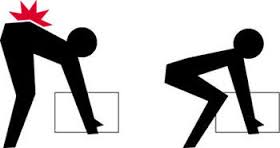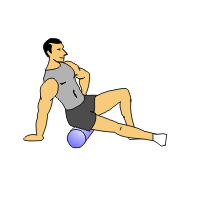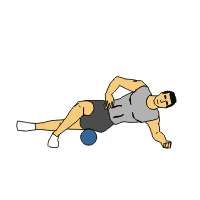What do we treat the most at Missing Link Physical Therapy??!!!The pain in the butt!!! No, I don’t mean the client, but literally a pain in the butt sometimes referred to as sciatica or piriformis syndrome. Often individuals have difficulty standing, sitting, walking, running or going up stairs. This pain can be very debilitating and decrease function and quality of life. This blog is aimed to address ways to decrease pain and the necessary treatment required in order to regain your mobility and function.
Frequently when a sudden ache in the butt or leg occurs people always wonder, why? Individuals often don’t experience back pain and have not done anything differently to cause this pain. Well, the body is a great machine and was built to be resilient. Very often by the time you experience a particular pain the movement dysfunction has been present for years. It is like eating the wrong foods and years later you have hypertension and heart disease. In the majority of cases we can contribute the cause of the pain to a nerve irritation in the low back or peripheral muscles. For instance, with mild to moderate degrees of nerve irritation to the low back you can get this abnormal tightness and guarding of the hamstring, gluteal (butt) muscles, calf muscles and even heel pain or cramping of the bottom of the foot.
In order to start recovering from this state you need to remove the irritation to the spine. If the condition is acute this can be done by pharmacological means (please refer to your physician for the appropriate drug of choice). From a Physical Therapy disposition this can be done by avoiding certain postures; such as slouched positions, any activity that may place stretch on the hamstring (want to avoid stretching of the hamstring as it will cause stress on the nerve if there is nerve tension), reading in the bed with legs extended…Basically you want to avoid any position that will place stress on the nerve. Imagine a long string that is attached to your spine and extends all the way to your foot, every time you slouch or stretch the hamstring you irritate the nerve. The stretch may feel good initially but you will find that you may suffer a rebound effect of pain later in the day, with even more tightness in the particular muscle. Figure A shows an individual reaching into a box with a rounded back posture; this will increase tension in the back and also the nerve. Figure B shows an individual stretching the hamstring with a rounded back posture, at this time the nerve may be on maximal tension and irritation may be at its greatest. In Figure C the individual to the left is placing increased stress to the back and nerve, the individual to the right is exhibiting good technique with lifting by hinging from the waist and bending the knees.
After decreasing the nerve irritation it is now time to improve the muscle tension. This can be done by getting a deep tissue massage, foam rolling or trigger point dry needling (my recommended treatment of choice). You want to improve the muscle length of the gluteal muscles and back muscles. Figure D, E, F, H represent foam roll massages; these massages should be performed as tolerated, slowly kneading out the trigger points in the respective muscles. Figures G and I represent stretches that can be performed for approximately 45-60 seconds. Please refrain from doing exercises if pain is elicited.

Figure F. Foam roll low back. Be sure to keep back neutral or slightly flexed in order to avoid excessive stress on the low back.
Last step is to stabilize the spine by avoiding an anterior or posterior pelvic tilt. I recommend stabilization of the lumbar spine with the back in neutral.

Figure J. The picture to the left represents an anterior pelvic tilt. The picture in the middle represents a neutral spine. The picture to the right represents a posterior pelvic tilt.
In this blog I have purposely avoided educating on abdominal stabilization as I believe that the exercise for stabilization should be monitored. The reason individuals have pain in the first place is because of a movement dysfunction, so I highly suggest getting assistance from a trained movement specialist (physical therapist, personal trainer, athletic trainer, pilates instructor, yoga instructor etc.). Pain does not just appear but is comes about due to increased stress being placed on a structure in the body over time. REPAIR THE MOVEMENT AND YOU IMPROVE THE PAIN.
Please take note that in order to have somewhat of a full recovery from this injury you must make sure that you are able to contract the deep abdominals appropriately and work on maintaining the contraction over time with your respective exercise/activity. With practice over time these muscles should contract involuntarily.
Over time if symptoms appear to be unrelenting and worsening we suggest getting further diagnostic testing to determine if there is structural damage such as a disc bulge/ herniation, degenerative changes in the spine, etc. Further medical treatment may be required in order to decrease symptoms prior to initiating an exercise program.
In our clinic we see many of these cases and have been very successful with treatment. We shall be delighted if you call us and schedule an appointment today. I am sure that you want to resolve the nagging pain in your ‘butt’.
You can Contact us at: Phone:703-858-5070, Email: office@missinglinkpt.com, website:www.missinglinkpt.com.
We are located at: 44933 George Washington Blvd Suite 165, Ashburn VA 20147







